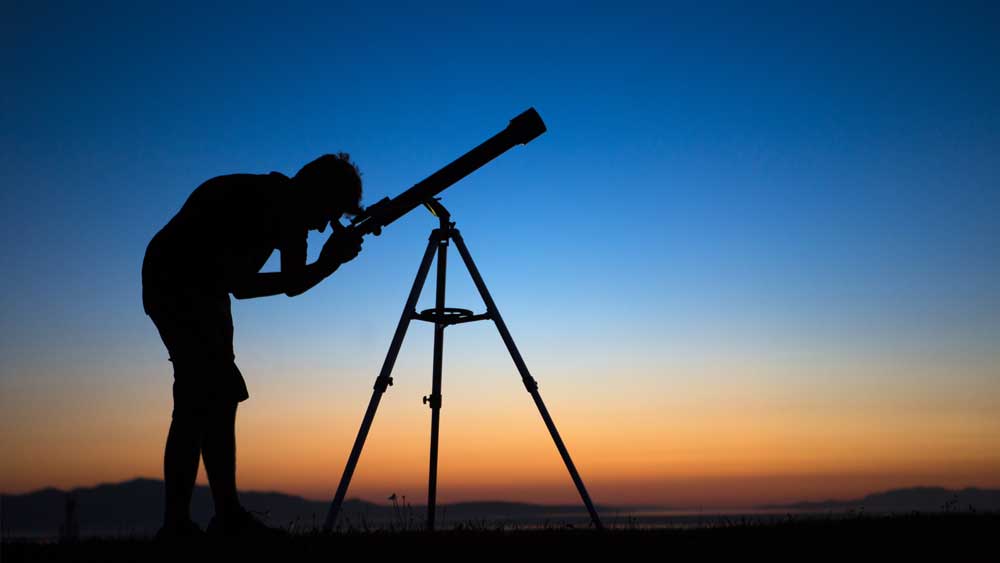When I consider Your heavens, the work of Your fingers, the moon and the stars, which You have ordained, What is man that you are mindful of him, and the son of man that you visit him?1
The starry night sky is a good reminder of God’s greatness and power.
Perhaps you have always wanted to experience more of its beauty. But as an adult with responsibilities, staying up late to see a particular celestial sight is rarely an option. However, the coronavirus has reduced work hours for many of us, which means that, like it or not, we now have some free time on our hands. For those who have always had an itch to pursue amateur astronomy, now is a great time to start this hobby by yourself or with your family. Furthermore, a number of inexpensive—and free—tools can help you get started.
Obviously, owning a telescope is ideal, but a quality telescope will probably cost you $200-$300. Such a purchase in these economically uncertain times may not be realistic for most. However, if you are willing to spend the money, many outlets are still filling orders online and would appreciate your business. (Be sure to disinfect the package before bringing it into your house!) Meade, Celestron, and Orion are among the major astronomical outlets.2 Likewise, most companies will be glad to assist you either online or by phone in helping you decide what kind of telescope best meets your needs.
If you don’t have a telescope, binoculars are a great second choice, and they are much less expensive. Quality binoculars can be purchased for less than $100. Your family might have a pair already. It is remarkable how much more of the night sky binoculars enable you to see, even in places with significant light pollution. You probably won’t be able to see Saturn’s rings, but you can clearly see craters on the Moon and many more stars than you can with just the naked eye. In fact, as a child, I was very impressed by the fact that a pair of binoculars enables you to see the famous Orion Nebula in the constellation Orion.
Unfortunately, binoculars are very hard to hold steady. However, in my own amateur stargazing, I have used a tripod and tripod adapter to alleviate this problem. The adapter consists of Velcro straps that wrap tightly around the binoculars, and an interface on the bottom of the adapter allows you to firmly mount the binoculars on a tripod. Both items can be purchased online for about $20 each, but make sure that the adapter fits the tripod! Furthermore, many amateur astronomers have constructed their own do-it-yourself binocular mounts and have posted their instructions for doing so online.3
Furthermore, there are free astronomy apps that you can download to your phone. These apps make it easier to navigate your way around the night sky.4 Some of these apps even tell you when satellites or the International Space Station will pass overhead!
Much astronomical information is freely available on the internet, including free websites such as heavens-above.com, that will show you what you can see in your night sky on any given night.5 The website timeanddate.com also has an astronomical section, which can tell you when different planets will be visible at your location.6
Much information is freely available on the internet. Unfortunately, many of these resources have a secular perspective, but they can at least help you learn some astronomy basics. Furthermore, ICR has numerous resources that will inform you of problems with secular cosmology, as well as evidence for creation. These include our award-winning four-part DVD series The Universe: A Journey Through God’s Grand Design, available in DVD format as well as digital download.7 We also have the highly popular What You Aren’t Being Told About Astronomy series.8
So if you’ve ever wanted to learn more about God’s celestial handiwork, now would be a great time to do so. In fact, we hope to keep you informed in the coming months of celestial events that may be of particular interest to creation and astronomy enthusiasts alike.
References
1. Psalm 8:3-4.
2. Any company or product mentions in this article are for informational purposes only and should not be construed as an endorsement of one brand over another.
3. See for example, Seronik, G. Build This Simple Binocular Mount. Gary Seronik: A place for night sky enthusiasts. Posted on garyseronik.com January 7, 2013, accessed April 1, 2020.
4. Lascala, M. 15 Best Stargazing Apps for iPhones and Androids. Good Housekeeping. Posted on goodhousekeeping February 1, 2019, accessed March 30, 2020.
5. Note that in order to get accurate results from the heavens-above.com website, you must first specify your location. After doing so, the skychart will show you what is visible in your sky at a given local time. It also contains handy buttons that enable you to move the sky forward or backward in time.
6. TimeAndDate.com.
7. The Universe: A Journey Through God’s Grand Design. 2018. Dallas, TX: Institute for Creation Research.
8. Psarris, S. What You Aren’t Being Told About Astronomy DVD pack. Creation Astronomy Media.
*Dr. Jake Hebert is Research Associate at the Institute for Creation Research and earned his Ph.D. in physics from the University of Texas at Dallas.

















